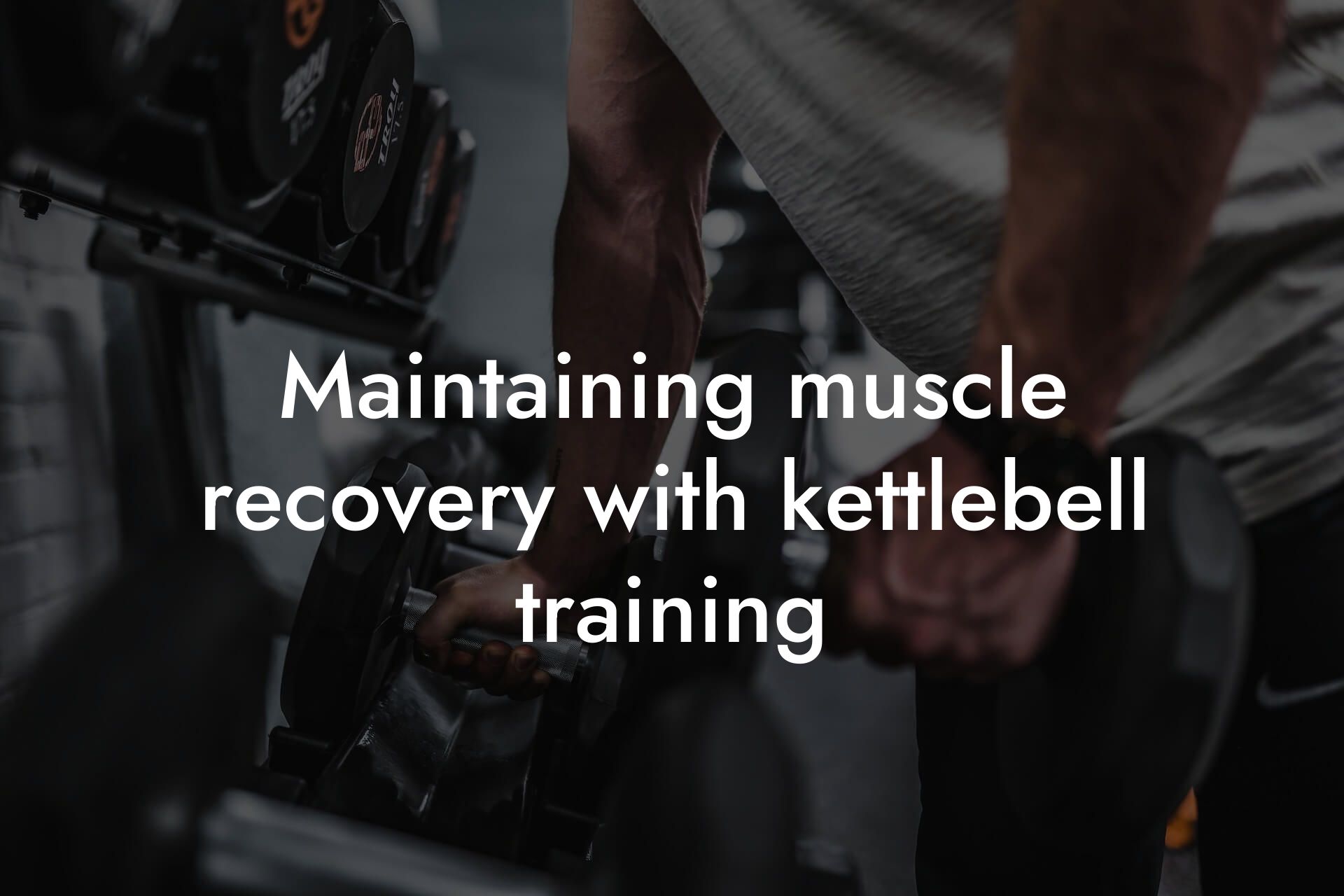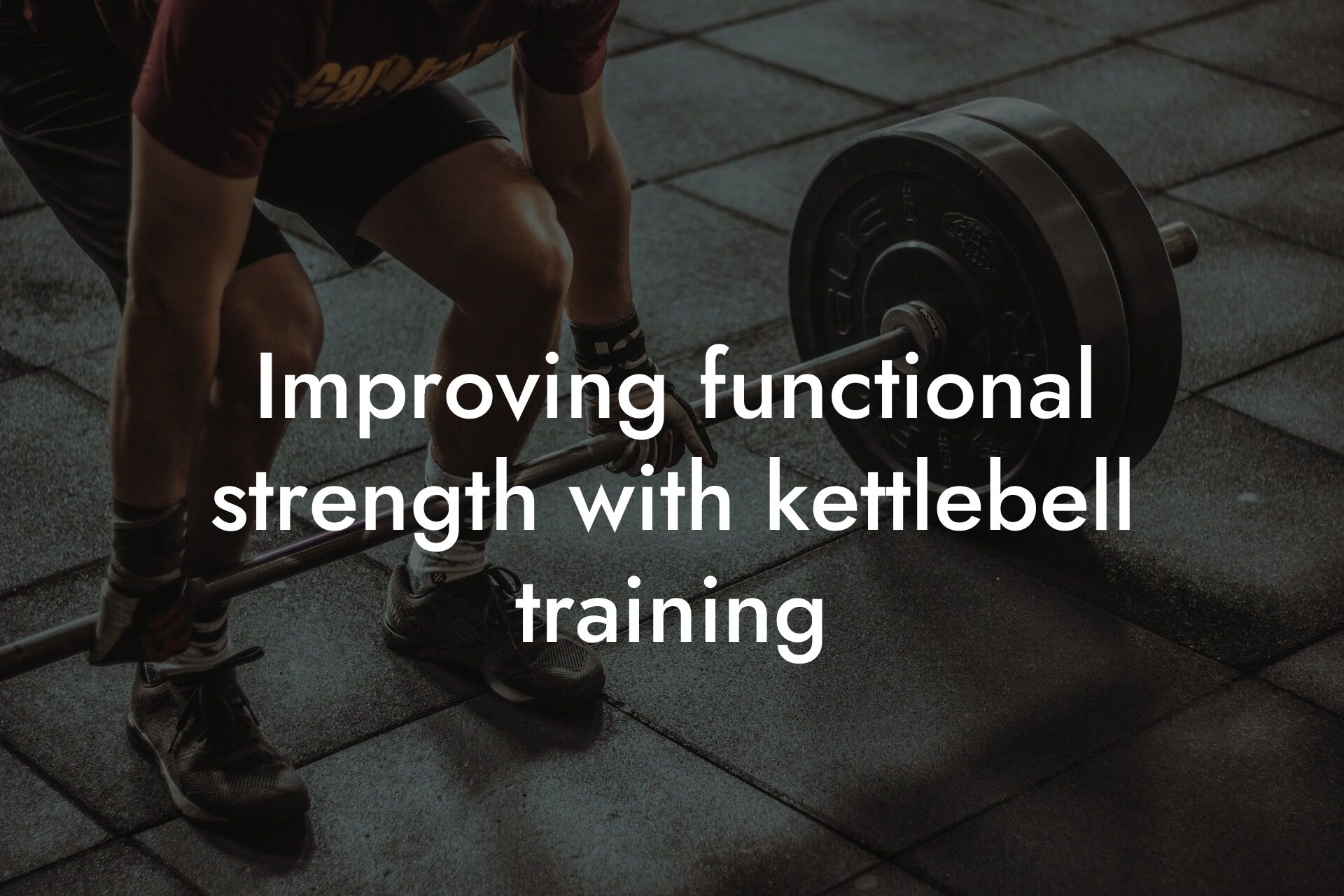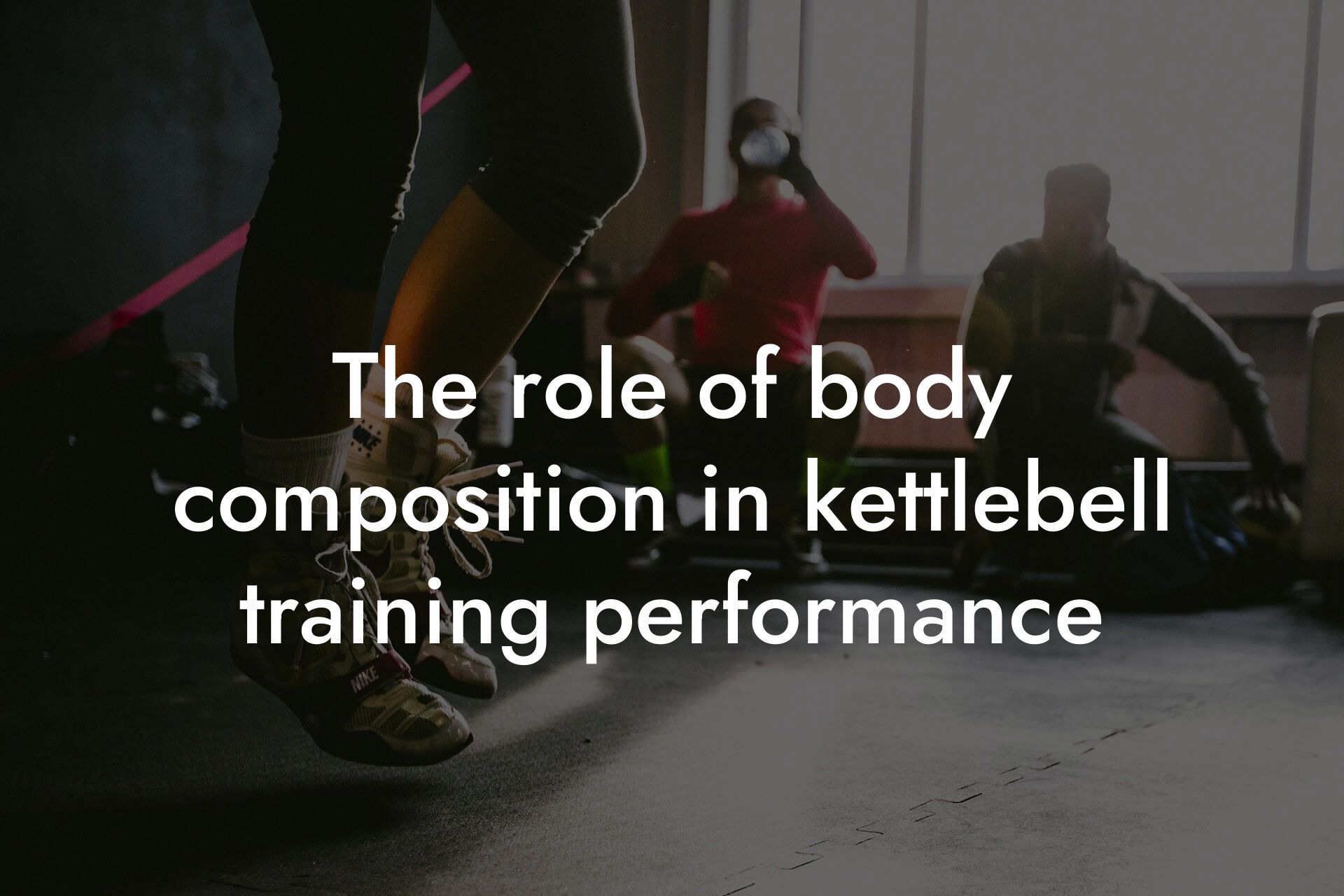Getting Started with Kettlebell Training
As a high-earning professional, you understand the importance of investing in your physical health to maintain peak performance in your career. One effective way to achieve this is through strength training, and kettlebell exercises are an excellent addition to any workout routine. Kettlebells are versatile, space-efficient, and can be used to target various muscle groups. However, to get the most out of kettlebell training, it's essential to understand the basics and follow proper techniques.
Table of Contents
- Getting Started with Kettlebell Training
- Choosing the Right Kettlebell Weight
- Mastering Kettlebell Swing Technique
- Incorporating Kettlebell Exercises into Your Workout Routine
- Focus on Functional Strength
- Progressive Overload and Kettlebell Training
- Common Mistakes to Avoid in Kettlebell Training
- Tracking Progress and Staying Motivated
- Incorporating Kettlebell Training into Your Busy Schedule
- Frequently Asked Questions
Choosing the Right Kettlebell Weight
Selecting the appropriate kettlebell weight is crucial for a safe and effective workout. A weight that's too light may not challenge your muscles sufficiently, while a weight that's too heavy can lead to poor form and injury. When starting out, it's better to err on the side of caution and begin with a lighter weight, gradually increasing it as you build strength and endurance. A good rule of thumb is to start with a weight that allows you to complete the desired number of repetitions with proper form, but still challenges you.
Mastering Kettlebell Swing Technique
The kettlebell swing is a fundamental exercise that works multiple muscle groups, including your glutes, hamstrings, and core. To perform a proper kettlebell swing, start with your feet shoulder-width apart, holding the kettlebell with both hands. Hinge your hips, keeping your back straight, and swing the kettlebell back between your legs. Then, explosively drive your hips forward, using your glutes and hamstrings to generate power, and swing the kettlebell up to chest height. Repeat for the desired number of repetitions, focusing on maintaining proper form throughout the exercise.
Incorporating Kettlebell Exercises into Your Workout Routine
Kettlebell exercises can be incorporated into your workout routine in a variety of ways. You can use them as a standalone workout, or combine them with other exercises, such as bodyweight exercises or cardio exercises. A typical kettlebell workout routine may include exercises like the kettlebell swing, goblet squat, kettlebell clean and press, and kettlebell rows. Aim to include 2-3 kettlebell exercises in your routine, 2-3 times a week, to ensure a well-rounded workout.
Focus on Functional Strength
Kettlebell exercises are designed to improve functional strength, which is the strength you need for everyday activities and sports. Unlike traditional weightlifting exercises, which often focus on isolating specific muscle groups, kettlebell exercises work multiple muscle groups simultaneously, mimicking real-life movements. This approach helps improve your overall strength, balance, and coordination, making it an excellent choice for busy professionals who need to stay active and mobile.
Progressive Overload and Kettlebell Training
Progressive overload is a fundamental principle of strength training, which involves gradually increasing the weight or resistance to continue challenging your muscles and promoting growth. With kettlebell training, you can achieve progressive overload by increasing the weight, reps, or sets over time. For example, you can start with a lighter weight and higher reps, gradually decreasing the reps and increasing the weight as you build strength.
Common Mistakes to Avoid in Kettlebell Training
As with any form of exercise, there are common mistakes to avoid when training with kettlebells. One of the most common mistakes is using poor form, which can lead to injury. Make sure to focus on proper technique, engaging your core and using your hips and legs to generate power. Another mistake is not warming up properly, which can increase the risk of injury. Always warm up with 5-10 minutes of light cardio and dynamic stretching before starting your kettlebell workout.
Tracking Progress and Staying Motivated
Tracking your progress and staying motivated are crucial for achieving your fitness goals. With kettlebell training, you can track your progress by monitoring your weight, reps, and sets over time. You can also take progress photos, measurements, or track your body fat percentage using a DEXA scan. Staying motivated can be achieved by setting specific, measurable, and achievable goals, finding a workout buddy, or rewarding yourself for reaching milestones.
Incorporating Kettlebell Training into Your Busy Schedule
As a high-earning professional, you understand the importance of time management. Incorporating kettlebell training into your busy schedule can be challenging, but there are ways to make it work. You can start by committing to 2-3 kettlebell workouts per week, each lasting 20-30 minutes. You can also incorporate kettlebell exercises into your daily routine, such as doing a few sets of kettlebell swings during your lunch break or before a meeting. Remember, every bit counts, and even a short kettlebell workout is better than nothing.
Incorporating kettlebell training into your workout routine can be a game-changer for high-earning professionals looking to improve their physical appearance, body fat percentage, and overall health. By following the tips outlined in this article, you can ensure a safe and effective kettlebell workout that targets multiple muscle groups and improves functional strength. Remember to track your progress, stay motivated, and incorporate kettlebell training into your busy schedule. With consistency and dedication, you can achieve your fitness goals and take your business to the next level.
Frequently Asked Questions
What is the best way to start a kettlebell strength training program?
When starting a kettlebell strength training program, it's essential to begin with proper form and technique. Start with lighter weights and gradually increase the load as you build strength and endurance. It's also crucial to focus on exercises that work multiple muscle groups at once, such as the swing, clean and press, and goblet squat. This will help you build overall strength and efficiency.
What are the benefits of using kettlebells for strength training?
Kettlebells offer a unique set of benefits for strength training, including improved functional strength, increased power, and enhanced mobility. They also engage the core and stabilizer muscles, which helps improve overall athleticism and reduces the risk of injury. Additionally, kettlebells are a great way to add variety to your workouts and challenge yourself in new ways.
How do I choose the right kettlebell weight for my strength level?
Choosing the right kettlebell weight depends on your individual strength level and the specific exercise you're performing. A good rule of thumb is to start with a weight that allows you to complete the desired number of repetitions with proper form, but still challenges you. As you get stronger, you can gradually increase the weight to continue making progress.
What are some common mistakes to avoid when using kettlebells?
Some common mistakes to avoid when using kettlebells include arching your back, letting the kettlebell swing too far back between your legs, and not engaging your core and stabilizer muscles. It's also important to avoid using momentum to lift the kettlebell, as this can put unnecessary stress on your joints and increase the risk of injury.
How often should I incorporate kettlebell exercises into my workout routine?
The frequency of kettlebell exercises in your workout routine depends on your individual goals and fitness level. For beginners, 1-2 times per week is a good starting point, while more advanced lifters may incorporate kettlebell exercises 3-4 times per week. It's also important to balance kettlebell exercises with other forms of strength training and cardio to ensure overall fitness and well-roundedness.
What are some effective kettlebell exercises for building strength in my legs?
Some effective kettlebell exercises for building strength in your legs include the goblet squat, sumo deadlift, and single-leg deadlift. These exercises work multiple muscle groups at once, including the quadriceps, hamstrings, glutes, and calves. They also engage the core and stabilizer muscles, which helps improve overall athleticism and reduces the risk of injury.
Can kettlebells help with weight loss?
Yes, kettlebells can be an effective tool for weight loss. Because kettlebell exercises often engage multiple muscle groups at once, they can help increase your metabolism and burn calories more efficiently. Additionally, the high-intensity nature of kettlebell exercises can help improve cardiovascular fitness and increase excess post-exercise oxygen consumption (EPOC), which can further enhance weight loss efforts.
How do I incorporate kettlebell exercises into my existing workout routine?
Incorporating kettlebell exercises into your existing workout routine can be as simple as replacing traditional dumbbell or barbell exercises with kettlebell exercises. You can also add kettlebell exercises to the beginning or end of your workout as a warm-up or finisher. Another option is to create a dedicated kettlebell workout day, where you focus solely on kettlebell exercises.
What are some effective kettlebell exercises for building strength in my core?
Some effective kettlebell exercises for building strength in your core include the Turkish get-up, windmill, and plank row. These exercises engage the muscles of the core, including the abs, obliques, and lower back, which helps improve overall athleticism and reduces the risk of injury. They also enhance functional strength and mobility, making daily activities and other exercises easier and more efficient.
Can kettlebells help improve my bone density?
Yes, kettlebells can help improve bone density. Resistance training with kettlebells, particularly exercises that involve heavy loads and low-to-moderate repetitions, can help stimulate bone growth and density. This is especially important for older adults or individuals with a history of osteoporosis or osteopenia.
How do I progress from beginner to advanced kettlebell exercises?
Progressing from beginner to advanced kettlebell exercises involves gradually increasing the weight, volume, or intensity of your workouts. This can be achieved by adding more weight, increasing the number of repetitions or sets, or decreasing rest time between exercises. It's also important to focus on mastering proper form and technique before progressing to more advanced exercises.
What are some common kettlebell exercises for building strength in my upper body?
Some common kettlebell exercises for building strength in your upper body include the clean and press, snatch, and rows. These exercises engage the muscles of the shoulders, back, and arms, which helps improve overall athleticism and enhances functional strength. They also increase mobility and flexibility, making daily activities and other exercises easier and more efficient.
Can kettlebells help improve my physique?
Yes, kettlebells can help improve your physique. Because kettlebell exercises often engage multiple muscle groups at once, they can help increase muscle mass and burn body fat. This can lead to a more toned and athletic physique. Additionally, the high-intensity nature of kettlebell exercises can help improve cardiovascular fitness and increase excess post-exercise oxygen consumption (EPOC), which can further enhance physique goals.
How do I choose the right kettlebell grip for different exercises?
The right kettlebell grip for different exercises depends on the specific exercise and your individual comfort level. For example, the clean and press typically involves a neutral grip, while the snatch involves a pronated grip. It's essential to experiment with different grips to find what works best for you and the exercise you're performing.
What are some effective kettlebell exercises for building strength in my glutes?
Some effective kettlebell exercises for building strength in your glutes include the swing, goblet squat, and sumo deadlift. These exercises engage the gluteus maximus, gluteus medius, and gluteus minimus, which helps improve overall athleticism and enhances functional strength. They also increase mobility and flexibility, making daily activities and other exercises easier and more efficient.
Can kettlebells help improve my athletic performance?
Yes, kettlebells can help improve athletic performance. Because kettlebell exercises often engage multiple muscle groups at once, they can help increase power, speed, and agility. They also enhance functional strength and mobility, making it easier to perform daily activities and other exercises. Additionally, the high-intensity nature of kettlebell exercises can help improve cardiovascular fitness and increase excess post-exercise oxygen consumption (EPOC), which can further enhance athletic performance.
How do I incorporate kettlebell exercises into my workout routine for fat loss?
Incorporating kettlebell exercises into your workout routine for fat loss involves focusing on high-intensity exercises that engage multiple muscle groups at once. This can include exercises like the swing, clean and press, and goblet squat. It's also important to incorporate cardio exercises, such as burpees or jump squats, to enhance fat loss efforts.
What are some common mistakes to avoid when performing kettlebell swings?
Some common mistakes to avoid when performing kettlebell swings include arching your back, letting the kettlebell swing too far back between your legs, and not engaging your core and stabilizer muscles. It's also important to avoid using momentum to lift the kettlebell, as this can put unnecessary stress on your joints and increase the risk of injury.
Can kettlebells help improve my posture?
Yes, kettlebells can help improve posture. Because kettlebell exercises often engage the muscles of the core and back, they can help improve posture and reduce the risk of back pain. Additionally, the functional strength and mobility gained from kettlebell exercises can help improve overall athleticism and reduce the risk of injury.
How do I progress from beginner to advanced kettlebell swings?
Progressing from beginner to advanced kettlebell swings involves gradually increasing the weight, volume, or intensity of your workouts. This can be achieved by adding more weight, increasing the number of repetitions or sets, or decreasing rest time between exercises. It's also important to focus on mastering proper form and technique before progressing to more advanced exercises.
What are some effective kettlebell exercises for building strength in my back?
Some effective kettlebell exercises for building strength in your back include the row, single-arm row, and Turkish get-up. These exercises engage the muscles of the back, including the latissimus dorsi, trapezius, and rhomboids, which helps improve overall athleticism and enhances functional strength. They also increase mobility and flexibility, making daily activities and other exercises easier and more efficient.
Can kettlebells help improve my overall fitness and well-being?
Yes, kettlebells can help improve overall fitness and well-being. Because kettlebell exercises often engage multiple muscle groups at once, they can help increase strength, power, and endurance. They also enhance functional strength and mobility, making daily activities and other exercises easier and more efficient. Additionally, the high-intensity nature of kettlebell exercises can help improve cardiovascular fitness and increase excess post-exercise oxygen consumption (EPOC), which can further enhance overall fitness and well-being.
Here are some related articles you might love...
- Maintaining muscle recovery with kettlebell training
- Improving functional strength with kettlebell training
- The role of body composition in kettlebell training performance
- Reducing body fat for better kettlebell workout results
- The importance of bone density in kettlebell fitness
- Nutrition strategies for kettlebell enthusiasts
- Balancing strength, speed, and flexibility in kettlebell workouts
- How DEXA scans can benefit kettlebell training athletes
Zak Faulkner
Zak Faulkner is a leading authority in the realm of physical health and body composition analysis, with over 15 years of experience helping professionals optimise their fitness and well-being. As one the experts behind Tano Performance Group, Zak has dedicated his career to providing in-depth, science-backed insights that empower clients to elevate their physical performance and overall health.
With extensive knowledge of DEXA technology, Zak specializes in delivering comprehensive body assessments that offer precise data on body fat, muscle mass, bone density, and overall physique. His expertise enables individuals to make informed decisions and achieve their fitness goals with accuracy and confidence. Zak’s approach is rooted in a deep understanding of human physiology, combined with a passion for helping clients unlock their full potential through personalised strategies.
Over the years, Zak has earned a reputation for his commitment to excellence, precision, and client-focused service. His guidance is trusted by top professionals who demand the best when it comes to their health. Whether advising on fitness programs, nutritional strategies, or long-term wellness plans, Zak Faulkner’s insights are a valuable resource for anyone serious about taking their health and fitness to the next level.
At Tano Performance Group, Zak continues to lead our Content Team revolutionising how professionals approach their physical health, offering unparalleled expertise that drives real results.




